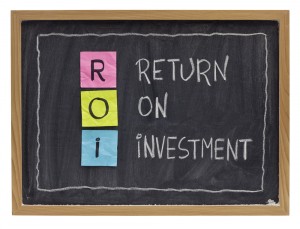Brands
Content Promotion Strategy 101
Content marketing involves more than just writing stories for the web. Beyond generating blog posts or articles, brands need a clear understanding of how to get stories seen, spread, and shared. They also need to be able to define and measure results, strengths, and weaknesses.
 The following steps provide an outline to help plan and implement a content promotion strategy.
The following steps provide an outline to help plan and implement a content promotion strategy.
1. Define Objectives
Even the most well-written blog posts and social campaigns need a goal. At a high-level, content should add value to your company’s business model. Examples of concrete objectives include product promotion, visitor recruitment and audience development. The goals might be something else entirely: for example, leveraging a blog as a platform for educating existing clients and prospective customers.
If pursuing more than one goal, the trick is to stay as focused as possible. Chaos is best avoided when plans are manageable, so companies should keep objectives as straightforward and compartmentalized as possible.
The Content Marketing Institute recommends thinking about content strategy and social strategy as two separate pieces. Marketers should know what type of conversation they want to have before they have it. Then, they can generate the relevant social buzz.
2. Create a Timeline
In promoting a blog post, a company might set a goal to get 20 shares or 200 pageviews within a week as a means to quantify success. Setting this type of timeline is important because it will help streamline the company’s goals into results that can grow and be tracked over time.
A timeline can also help refine the overall strategy. Leyl Master Black recommends that content marketers brainstorm topics ahead of time. This type of idea generation is important for helping organizations remain on track and adapt to time-sensitive trends.
Depending on the project, a longterm timeline might be valuable. If a brand is launching a blog, for instance, it may want to establish time-driven milestones for traffic growth and social media shares.
3. Set Benchmarks for ROI
 After a company knows what it wants to achieve, it needs to create a budget for it. For long-term content promotion projects, benchmarks will help gauge performance immediately and over time. By tracking strengths and weaknesses, companies can create an adaptive strategy that can evolve in a cost-effective way.
After a company knows what it wants to achieve, it needs to create a budget for it. For long-term content promotion projects, benchmarks will help gauge performance immediately and over time. By tracking strengths and weaknesses, companies can create an adaptive strategy that can evolve in a cost-effective way.
The 5 basic metrics to measure the ROI of a content promotion strategy include social media shares, time spent on site, unique visitors, return visitors, and eventually, blog related revenue. Content marketers should focus on the numbers that enhance content quality.
For instance, spending thousands of dollars on blog posts that have generated fewer than 10 pageviews in a year is likely a poor return on investment and should prompt a company to consider changing its strategy or spending less.
4. Leverage Key Networking Channels
Content promotion and networking go hand-in-hand, as even the most high-traffic blogs need to make an active effort to connect with an audience.
 Before a company starts reaching out to people, it needs to take a step back to determine where it would like to create connections. If it is interested in reaching businesses, LinkedIn discussion groups, for example, provide a great starting point for reaching prospective readers.
Before a company starts reaching out to people, it needs to take a step back to determine where it would like to create connections. If it is interested in reaching businesses, LinkedIn discussion groups, for example, provide a great starting point for reaching prospective readers.
It can also join real-time conversations by promoting content through relevant Twitter #hashtag channels. For media exposure and additional blog coverage, it’s worthwhile to connect with reporters and other bloggers.
Of course, the business can also connect with existing social media followers and encourage them to share content as well. Creating a solid networking strategy will help ensure that the message doesn’t flounder in the midst of a mismatched audience.
5. Track Results
The metrics that a company follows will depend on the needs of the business and the intended goals of its campaign.
A company should be creative when it looks at data to measure any unintended consequences of its campaign, and of course, keep its data in a place that its team members can access as a learning tool. It should think about data in human terms to better understand the relationship between its content, readership, and ROI.
6. Be Creative
A company should think of its content promotion strategy as a living, breathing, and evolving project. It should combine the best of its favorite examples, articles, and sources to find a strategy that is unique to its brand.
Images courtesy of shutterstock
Get better at your job right now.
Read our monthly newsletter to master content marketing. It’s made for marketers, creators, and everyone in between.




